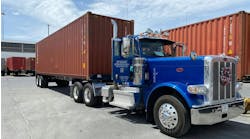Freight volumes remain soft at the midpoint of the year, largely due to the drag created by the still weak housing sector. However, manufacturing activity is increasing, albeit slowly, which could boost freight flows mildly in the months ahead.
The Institute for Supply Management’s (ISM) monthly manufacturing report for June found production in this sector rose 4.6% over May, with new orders up 0.7%. Inventories are starting to decrease as well, potentially raising the need for freight service. Overall inventories for manufacturing were down 0.8% in June compared to May, while customer inventories dropped 1%. As a result, order backlogs rose 1% in June over May.
“Following a weak first quarter, the manufacturing sector rebounded in a strong fashion during the second quarter,” said Norbert Ore, ISM’s chairman-- manufacturing business survey committee. “In June, manufacturing expanded at its fastest pace since April 2006 when the PMI Index registered 56.9. This performance appears sustainable in the third quarter due to the current strength in new orders and production.”
Still, the trucking industry isn’t seeing any benefit from that activity yet. The American Trucking Associations’ (ATA) for-hire tonnage index decreased 1.3% in May, marking the second consecutive month-to-month drop, as it fell 2.2% in April.
“Most carriers indicated that volumes were soft and spotty in May, which was clearly reflected in our index,” said Bob Costello, ATA chief economist. “We fully anticipated a contraction, but the fact that year-over-year truck tonnage deteriorated may mean that more volatility is in store. Unfortunately, we won’t have a good feel for the direction of volumes until we see June’s data.”
One of the primary reasons for the continued year-over-year index contractions is that manufacturing activity by weight, not value, fell again in May, said Costello. Manufacturing activity declined 1.4% when compared with the same month in 2006. This marked the seventh consecutive month that this weight-based manufacturing measure fell.
Activity in the housing sector also continues to slap a wet blanket on the freight outlook for carriers. Despite a modest 0.5% increase this June in the seasonally adjusted Credit Managers’ Index (CMI), as a 1.1% increase in the manufacturing sector offset a 0.2% decrease in the service sector, housing is still a problem, said Dan North, chief economist with credit insurer Euler Hermes ACI.
“The decimated housing market once again weighed heavily on suppliers of building materials in the service industry,” North noted “This condition seems likely to continue, given an increasing supply of homes for sale, sharp declines in housing permits and starts and the unprecedented fall of median year-over-year house prices for 10 consecutive months.”
Yet, according to North, overall, positive trends are shaping up for the U.S. economy. “Somewhat surprisingly, the manufacturing sector continues to expand on the back of an economy which continues to grow, albeit slowly,” he added. “Overall our report was moderately positive, reflecting the state of the economy as a whole.”


